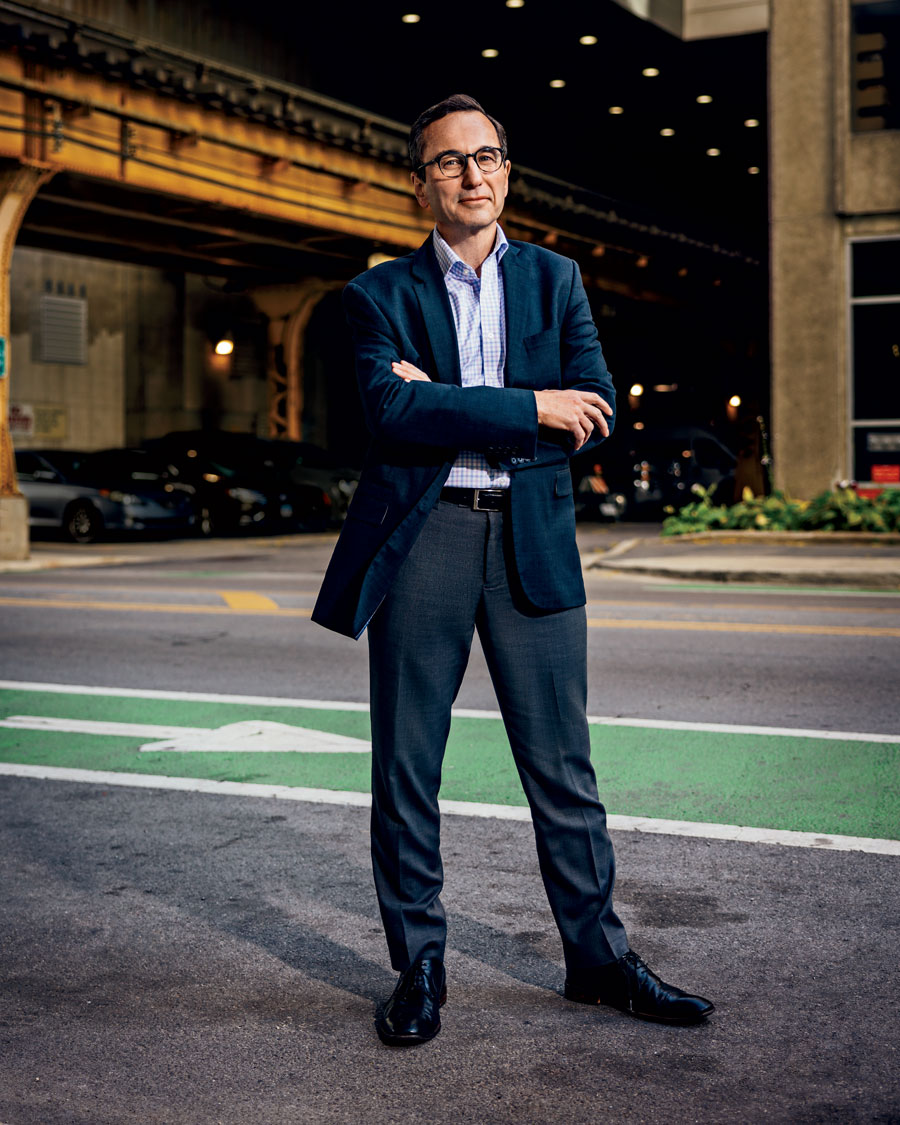
Steven K. Rothschild
Chair of the department of family medicine at Rush University Medical Center
How did you get involved with the Chicago Homelessness and Health Response Group for Equity?
CHHRGE was born because the medical students and faculty at Rush had been working at a West Side shelter, Franciscan Outreach. In mid-March 2020, our students were pulled out of clinics because we didn’t know how to keep them safe. We immediately said, “Well, what are we going to do for the patients who are counting on us for medications and care?” Within a week, we had [assembled] 450 people — representatives of other shelters, medical providers, and from the Departments of Public Health, Housing, and Family and Support Services. We became a community command center meeting twice a day just to do the problem solving.
How does your background in family medicine translate to COVID outreach for homeless patients?
Family doctors think about whole people with a wide range of problems — not just who they are, but who do they live with? Where do they work? What are they exposed to? How do they make health care decisions? We do that as part of teams of nurses and social workers and psychologists. The connection from taking care of families on a day-to-day basis to the work we’re doing with CHHRGE, it all makes up the big picture of public health.
What has working with CHHRGE revealed to you about public health?
COVID has shown that health care isn’t enough. We have to think about the larger community — because if our neighbors aren’t healthy, it’s harder for me to be healthy. When we looked at the map of where COVID hit hard in Chicago, it was the West, Southwest, and South Sides of the city — the Black and Latinx parts of the city. Essential workers had to come in to work because they were bus drivers, running factories, or working in health care. They didn’t have the luxury of working at home. When you look at how people live across our city, you see crowding, creating an opportunity for spread. Where you work and where you live impacts health outcomes over and above whether you have access to a doctor or clinician.
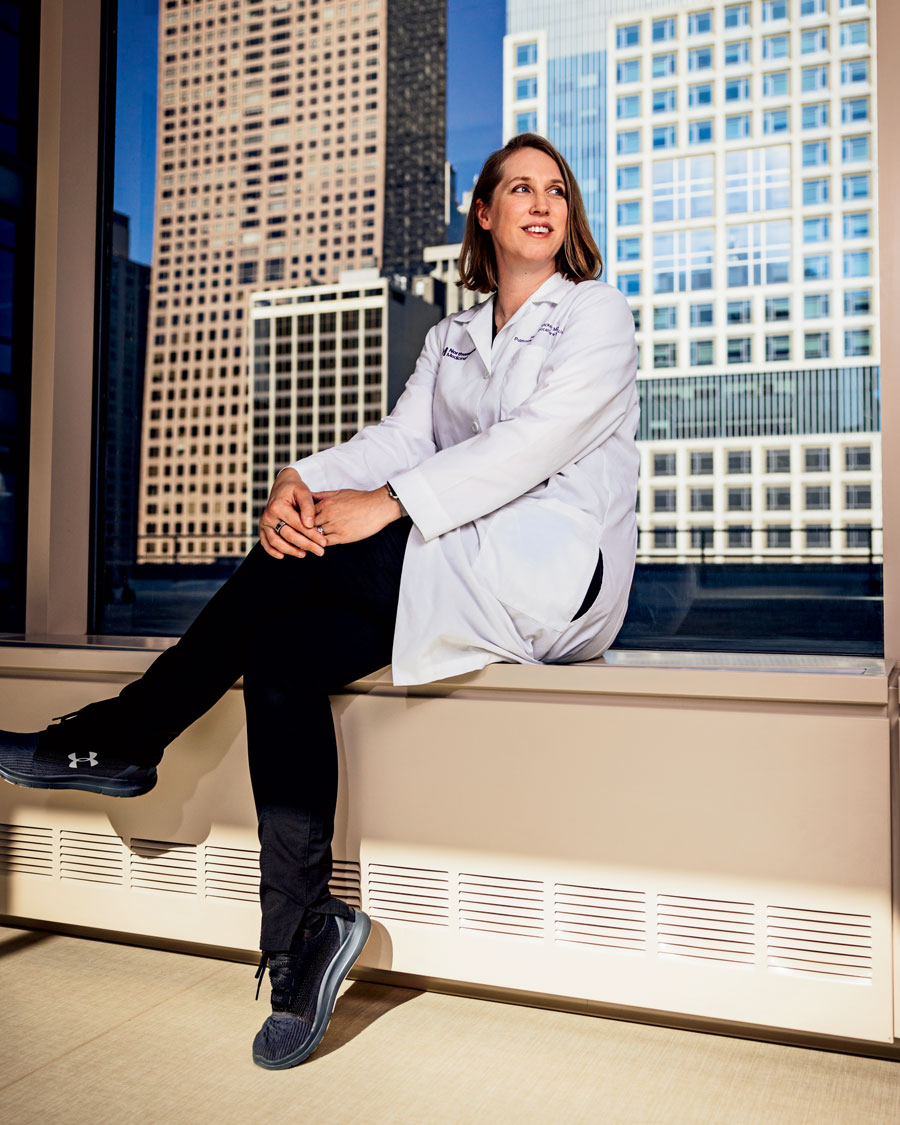
Michelle Lee Hinsch Prickett
Pulmonary and critical care specialist at Northwestern Memorial Hospital
What was your work like during the spring of 2020?
I was in our medical ICU covering the service at Northwestern when we had our first cases of COVID diagnosed, so we were pretty fearful. We had heard about this, but we hadn’t really seen it. It was a relatively new diagnosis, without great testing infrastructure — to say the least. So there were a whole lot of unknowns. What we did see was this pattern of patients coming in with something very different, but something was just repeating itself. Patients had a very similar presentation, and they started coming in pretty rapidly. So those first few weeks were very eye opening: trying to kind of get our boundaries, trying to understand what was before us and get a diagnosis, as well as communicating to make sure we all had a plan and could absorb and care for these patients safely.
Over the course of the pandemic, how have physicians and hospitals changed their response?
The pandemic showed us we really needed to listen to our patients more. You have to understand where people are coming from. It also showed us the importance of partnership with patients. Specifically, in the ICU, many of our patients were not able to communicate with us at all. All of the communication was coming through family members, which was happening remotely or through screens or through phones. Those connections that I think we may not have appreciated before, like talking to families at the bedside, the little things that happened — you really saw how valuable they were and how delicate those interactions need to be.
How has the pandemic changed you as a physician and a person?
I think when you really have to isolate, and you really have to quarantine — which is what a lot of us in the ICU had to do from our families and other places — it tells you what’s important. It really puts a spotlight on relationships and prioritization of what we’re doing. So, seeing the bigger picture, trying to not sweat the small stuff, and really focusing on relationships is kind of my takeaway from the pandemic.
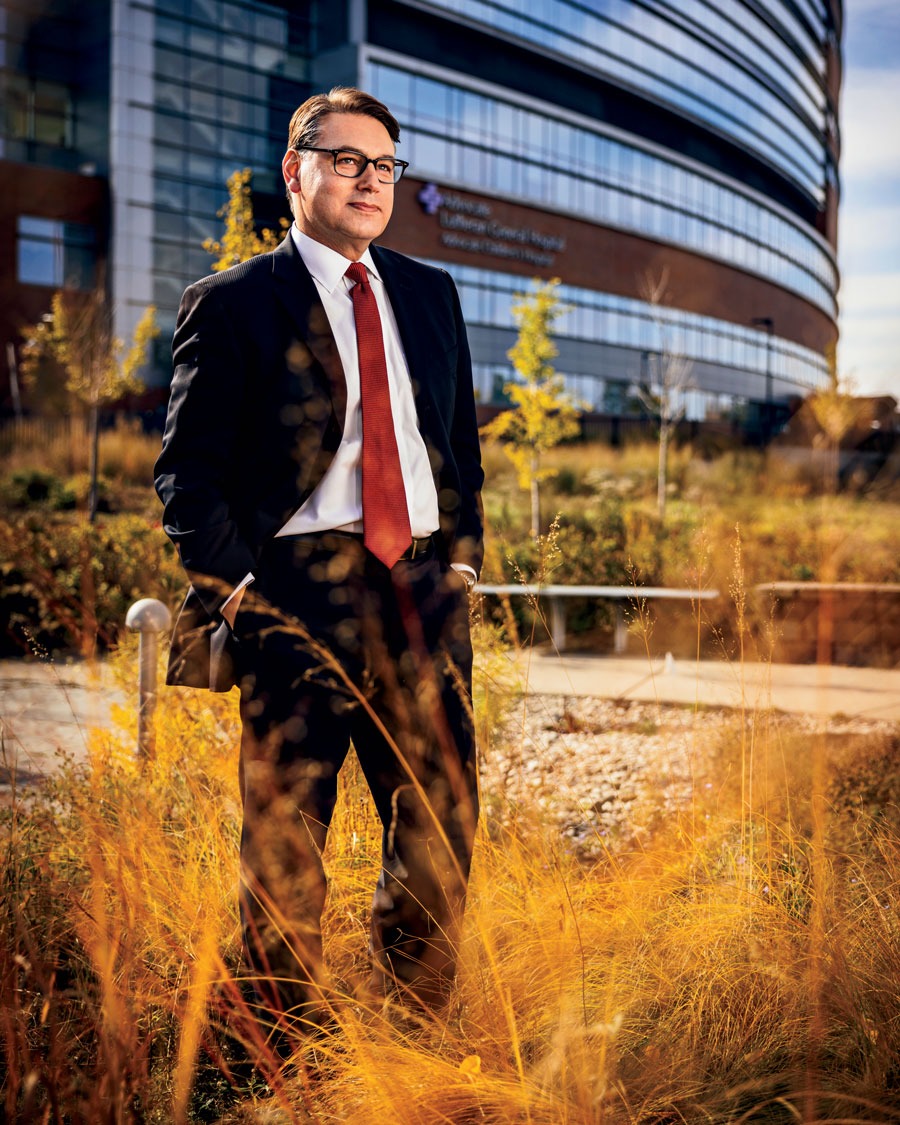
Demetrius Lopes
Codirector of the stroke program for Advocate Lutheran
How has COVID-19 affected stroke care at Advocate?
Before the pandemic, our 26 hospital systems had started organizing themselves to create a better system for daily communication to assess bed availability and protocols — but COVID intensified the need to provide care in a timely fashion. It was previously difficult to convey the sense of urgency we’ve always had in stroke management, because strokes are such a time-sensitive problem. It was a tremendous necessity for every hospital and every department to coordinate health care in a way we’ve never seen before.
What was one of the most surprising things you witnessed during the pandemic?
The complexity of cases was surreal. We had younger patients coming in with COVID and stroke symptoms with much harder occlusions [blood vessel blockages]. This made surgical times and teams increase because clots were much harder to remove. We used to have three to four people in an operating room; now we had seven or eight — who all needed PPE. In addition to the neurosurgical team, we needed more people to operate circulation equipment to manage the oxygenation of the patient.
How did COVID-19 change the future of stroke management?
Before COVID hit Chicago, we had invested in technology like telestroke — [using] iPad screens mounted on robots that visit patients. This allows neurologists to be bedside without being physically in the room. We went from relying on this technology 60 percent of the time to 100 percent of the time because it decreased [virus] exposure for our team. Artificial intelligence can interpret brain scan images and alert medical teams of a blood vessel blockage in five to six minutes, whereas it used to take 30 to 40 minutes to activate our teams.
How have these advancements made stroke care more equitable?
So many factors were accelerated by the pandemic. I can now perform procedures from my control room, connected to a robot’s arm. It doesn’t matter if you’re in a small country hospital or in a big city hospital.
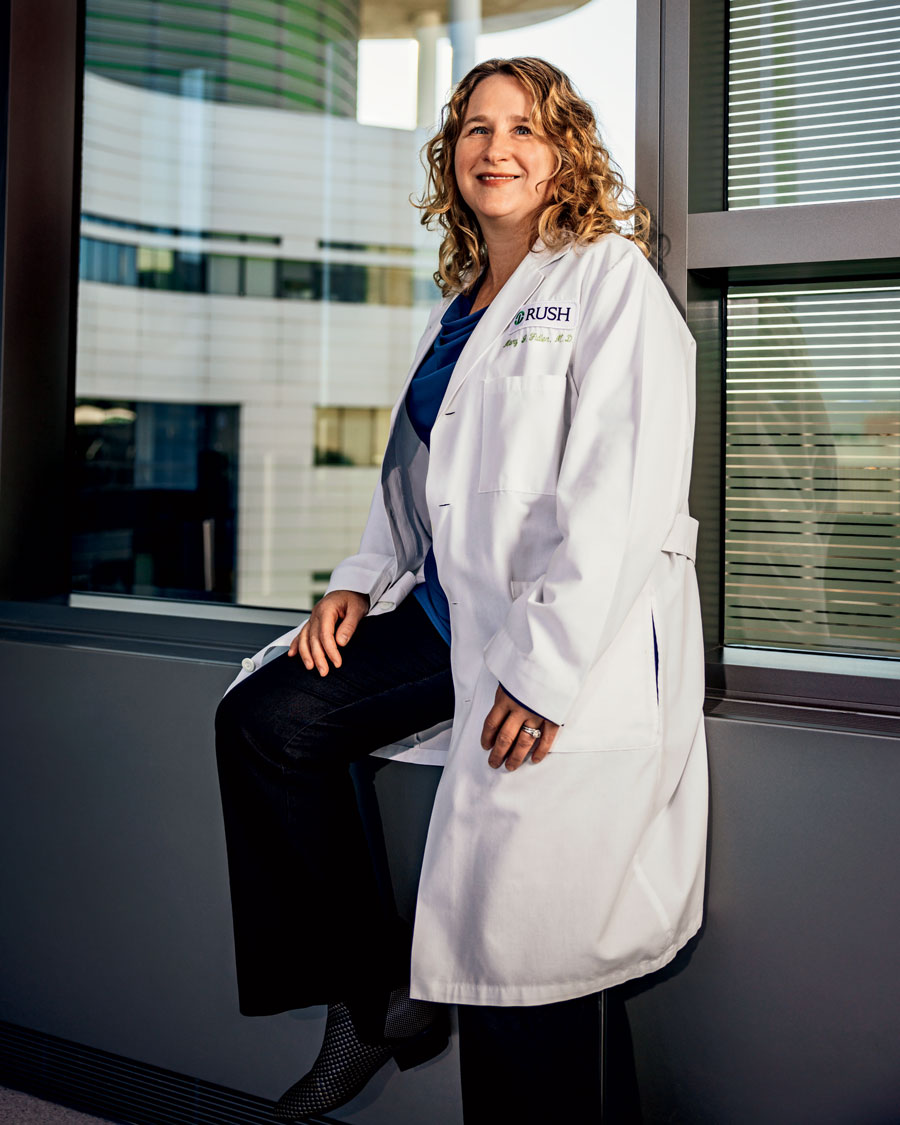
Mary Jo Fidler
Thoracic oncologist at Rush University Medical Center
How has your field changed over the course of the pandemic?
I think a big change has been improvements with patient access and telemedicine. Especially initially, our clinics were trying to minimize the flow of patients. It has improved access for patients who may not have the same ability to get to and from the medical center as others. There is a little bit of disparity that goes along with this. Fortunately, I feel like most patients are able to at least have phone visits, but not everyone can get the video visits set up. But overall, I think the benefit certainly has given everybody more access to the health care system.
Has the pandemic altered the way you approach your patients or medical situations?
It’s heightened my awareness to what else is happening in patients’ lives or concurrent medical problems they may have in relation to their lung cancer. I was honored to participate in a TERAVOLT study, which was an international collaboration started by physician members of the International Association for the Study of Lung Cancer. They created a database, from the early days of COVID, about patients who had a diagnosis of lung cancer and then subsequently became infected with COVID-19. The mortality rates for lung cancer patients are very high — above 20 percent. Seeing those figures really made me look at patients’ histories even more carefully for potential comorbidities that could be risk factors for bad outcomes with COVID-19.
What has Rush been doing to get diverse populations included in clinical trials?
The thoracic oncology program has been trying to collect biospecimens to predict a benefit for some new treatments we have available. Unfortunately, there’s usually a gross underrepresentation of Black people and Latinos in clinical trials. We’ve been mindful in recruiting biospecimens from these populations: on different features of their cancer, in the way their bodies react to their cancer, and how they may respond to treatments.
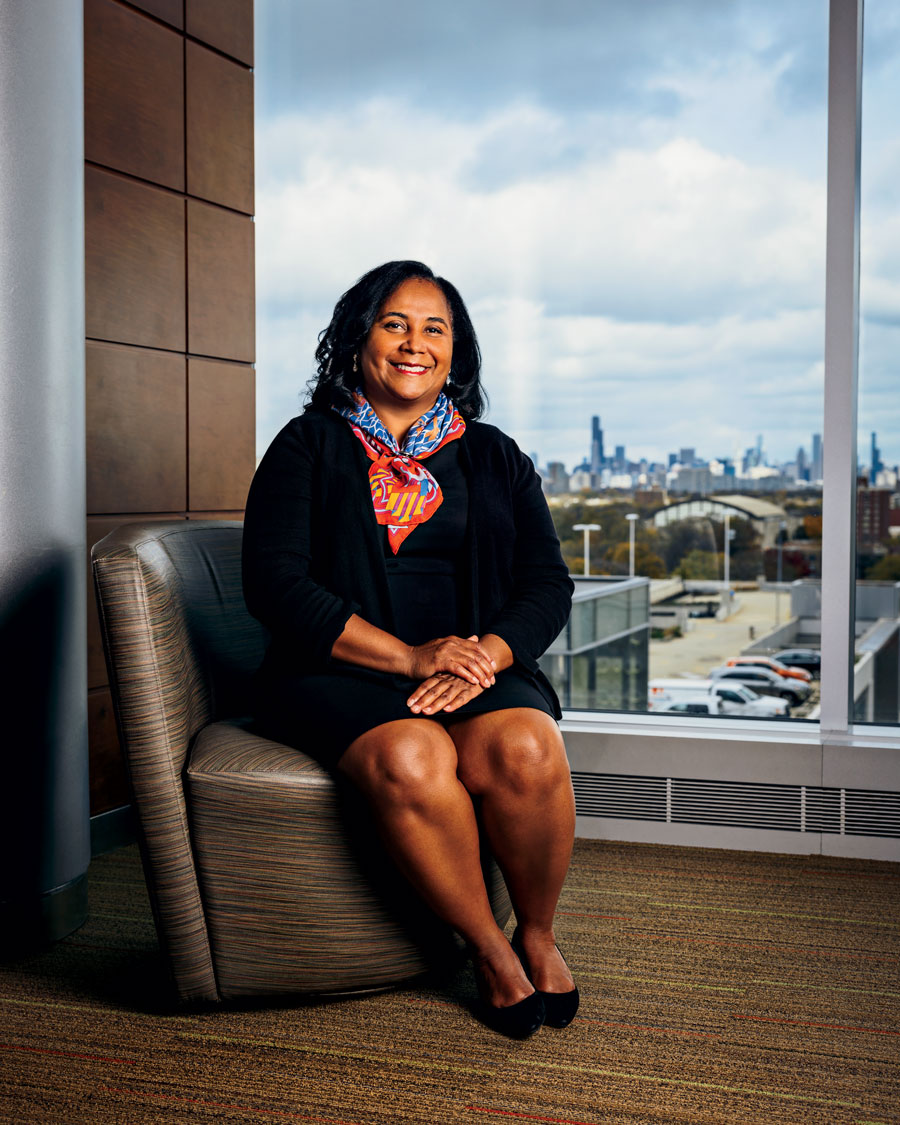
Anita K. Blanchard
Obstetrician-gynecologist at University of Chicago Medicine and associate dean of the Pritzker School of Medicine
What is the Community Champions program?
It’s an opportunity for University of Chicago medical residents and fellows to educate and interact with patients and leaders in neighborhoods on the South Side. The curriculum focuses on structural competency, looking at how policies — past and present — affect community access to care and compliance.
You launched the program in February 2021. Why did you decide to do so during the pandemic?
I grew up on the South Side, about 15 minutes from the University of Chicago. It’s a community with a rich, robust history — but there are a lot of health disparities. Our Black and Latinx communities were already disproportionately affected by factors like food deserts and access to transportation. The pandemic tells the same old story of inequality, but with an exclamation mark, emphasizing how urgently disparities need to be addressed.
What effect has the program had on local communities?
Around our 12 service areas, 53 percent of people live in poverty. By having our students physically in surrounding neighborhoods, it eliminated the power dynamic that exists in hospitals. It’s not a patient and a physician, but equal partners in conversation. South Side residents’ questions are answered and their concerns are listened to. We want to build trust and break down this conception that the University of Chicago is an ivory tower, instead of a community institution.
How are the participating residents and fellows affected by the program?
We graduate 330 [medical school] residents and fellows per year, but very few of them remain to practice on the South Side. This program helps them see patients beyond diagnoses. They see how difficult it is to travel from Englewood to the University of Chicago to get care. They see how few grocery stores and pharmacies exist in these communities. They understand we have to uplift everyone, or we won’t fully achieve the goals we have in health care.


